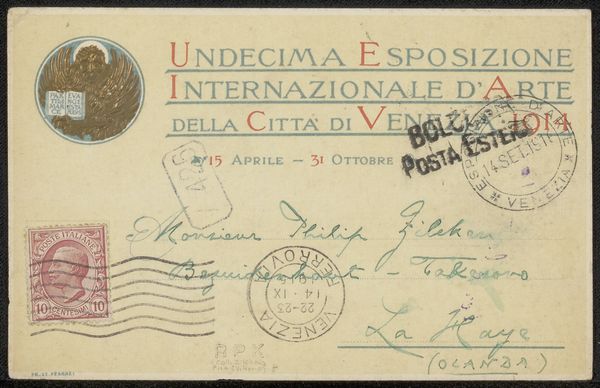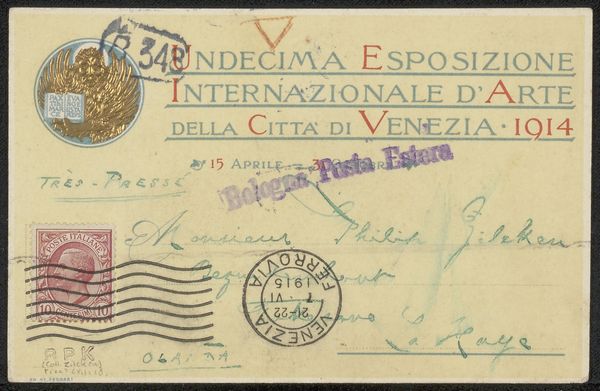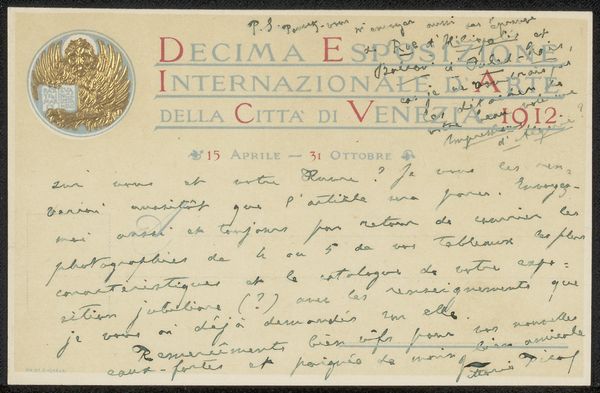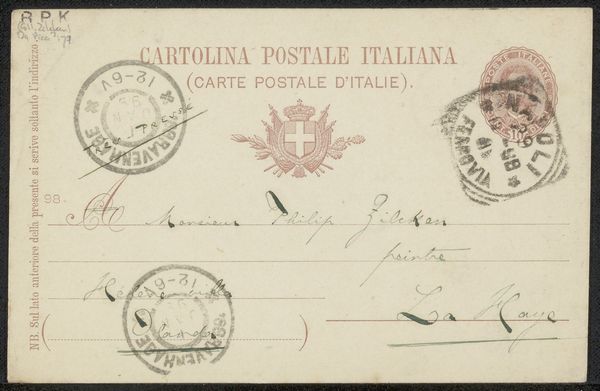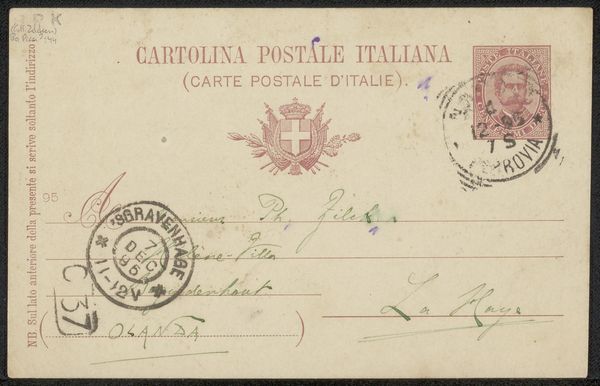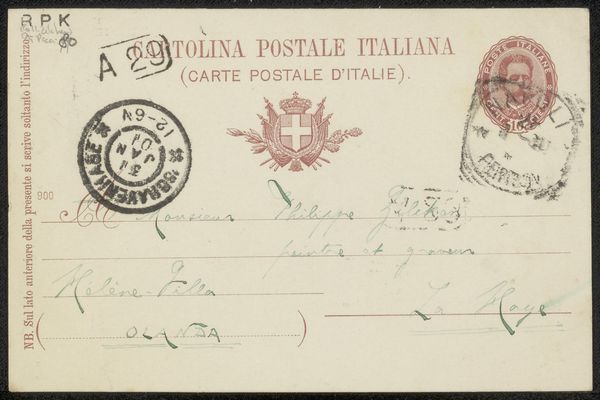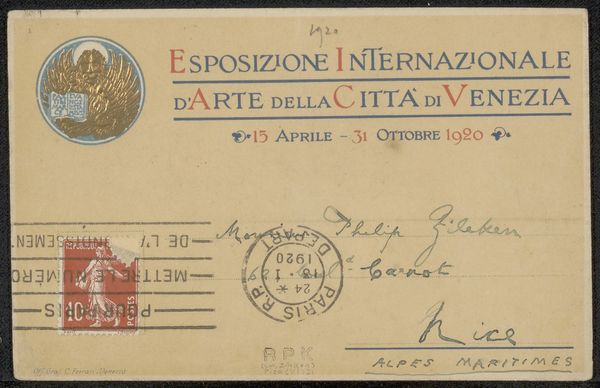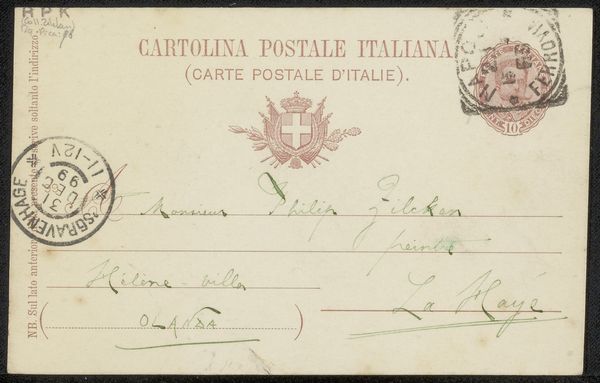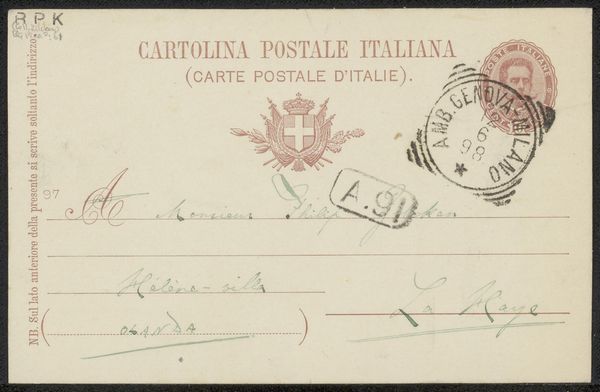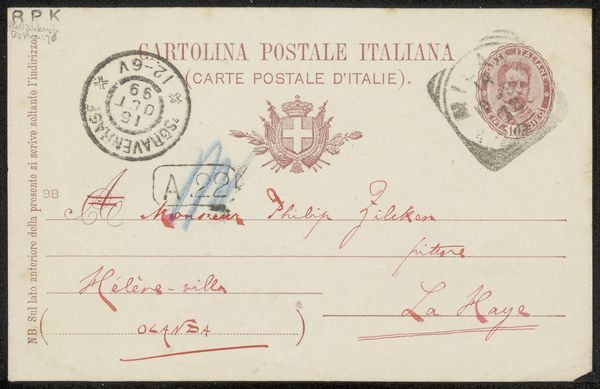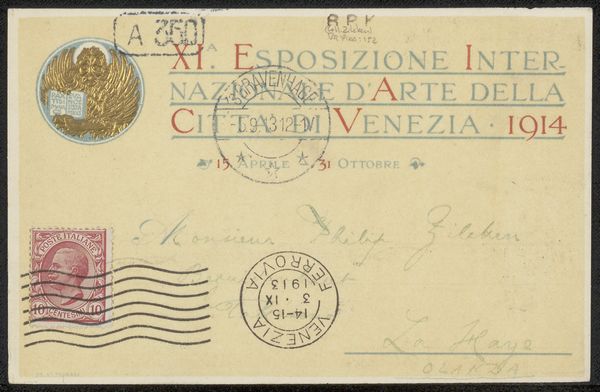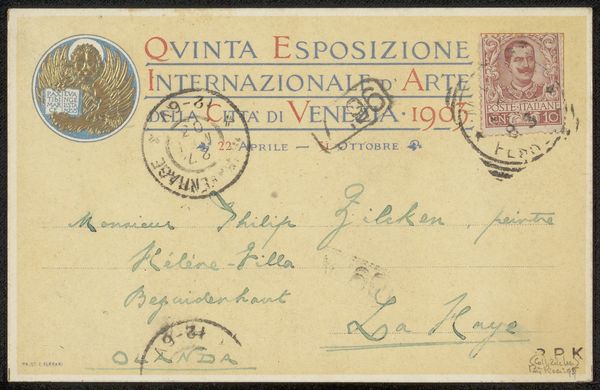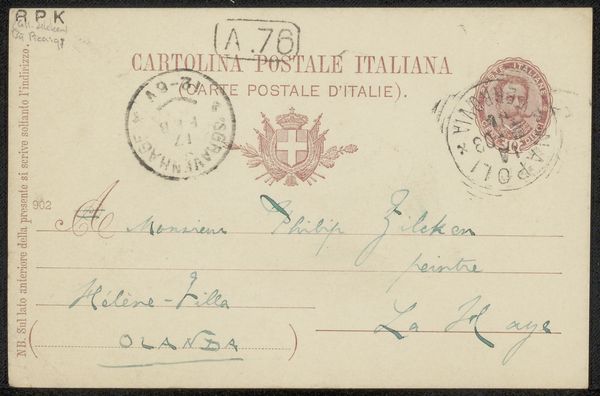
collage, print, paper, pen
#
toned paper
#
collage
# print
#
paper
#
personal sketchbook
#
ink drawing experimentation
#
ink colored
#
pen work
#
sketchbook drawing
#
pen
#
watercolour illustration
#
storyboard and sketchbook work
#
italian-renaissance
#
sketchbook art
#
marker colouring
Copyright: Rijks Museum: Open Domain
Curator: This is an intriguing little piece, titled "Briefkaart aan Philip Zilcken," likely dating back to 1912. It's a mixed media work using collage and print on toned paper. What strikes you first? Editor: Its intimacy. Despite the formal printed text of the Venice Biennale, the handwritten script, stamps, and smudges convey a personal and almost ephemeral quality, like a whispered message across time. Curator: Absolutely. This was no sterile announcement; it’s a personalized communication. Think of the early 20th century, the rise of international exhibitions—a cultural phenomenon aiming to unite nations, yet often perpetuating existing power dynamics. How does this relate to our view? Editor: The imagery pulls me in. We have the winged lion, a symbol deeply entrenched in Venetian identity, acting here almost as a guarantee of cultural significance. Note also the stamps which could imply a formal, bureaucratic process in contrast to the flowing script addressed to Zilcken. Curator: Consider Philip Zilcken, the recipient. As an artist, critic, and writer, how might he have understood this invitation? The Italian Renaissance, the movement associated here, wasn't merely about aesthetics; it embodied power, humanism, and cultural dominance. Editor: Yes, the winged lion holds multiple layers. It is both a marker of Venetian pride and echoes biblical symbolism. As the lion marks the presence of Saint Mark it becomes almost devotional in quality, connecting the personal, with spiritual significance of art itself. Curator: And within this lies a tension, the promise of a universally accessible art versus the exclusionary forces that often dictate who participates, whose voices are heard, and whose are not. Think about the sociopolitical implications surrounding access and representation. Editor: I agree. Its strength is how that grand historical sweep is miniaturized and individualized in this card format. Curator: I think reflecting on such an apparently simple everyday item helps reveal the complexity that is so easily missed in more prominent artwork. Editor: For me, it has evoked powerful emotions through these visual markers that invite exploration of personal meanings.
Comments
No comments
Be the first to comment and join the conversation on the ultimate creative platform.
